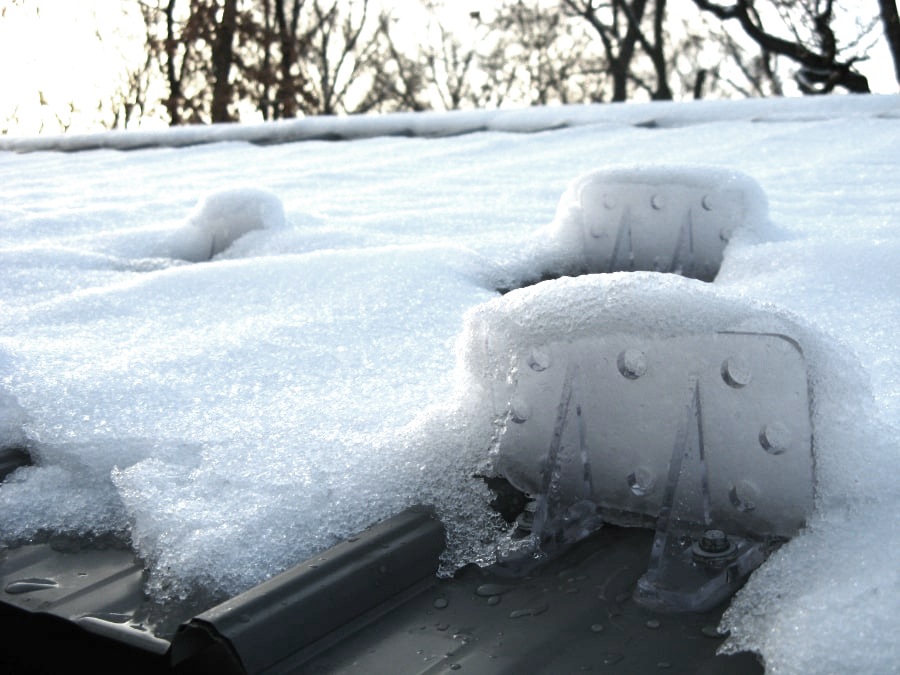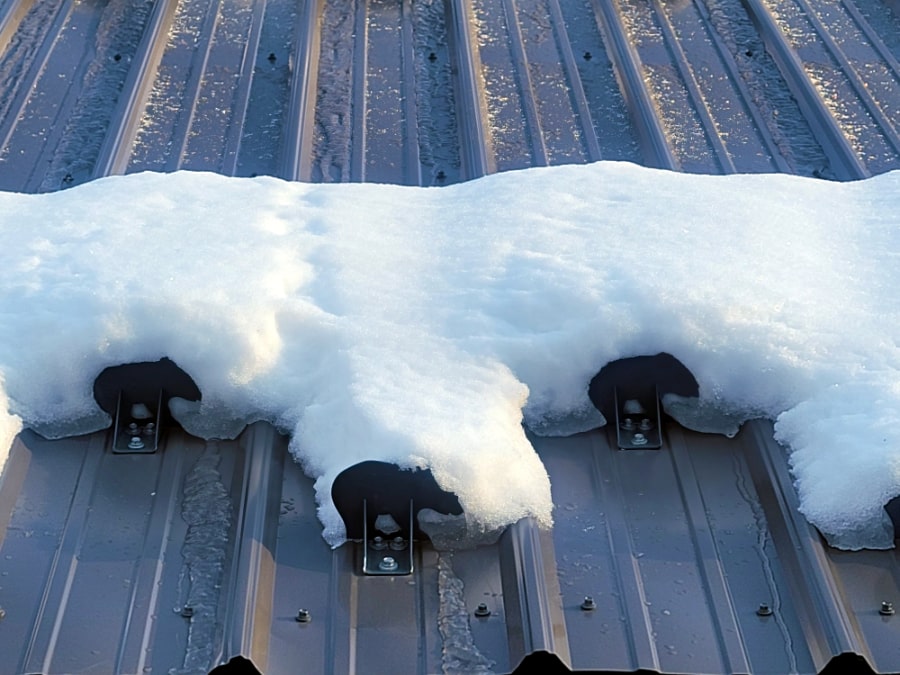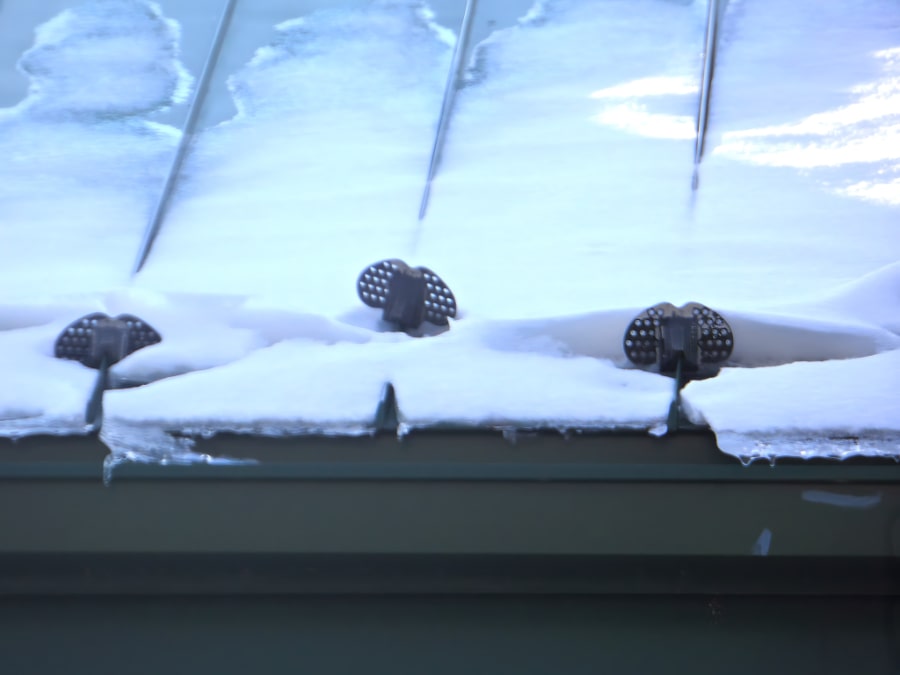Mounting Snow Guards on the High Ribs or the Panel Flats: Which is Correct?
Posted by Derek Gamble - SnoBlox-Snojax Specialist on Dec 20th 2023

What determines proper snow guard placement on a metal roof?
The
placement of
snow guards on a metal roof can depend on several
factors, including the type of metal roof panel, the pitch of the
roof, the building structure, and local weather conditions. Contrary
to some snow guard manufacturers’ philosophies, a proper layout
for snow retention is not an art, but a science. When installing snow
guards on your roof, the individual placement on the panel is just as
important to the success of the system. This is especially true when
using mechanical fasteners for attachment. In this article, we will
discuss why, it is always recommended to install them in the flats
between the ribs of a metal roof panel and NEVER on the high rib
themselves.
What is some common roof panel terminology?
First, a little refresher on roof panel terminology. The “flat” of the panel refers to the low flats between any raised sections of the roof panel. It is the part of the panel that runs parallel to and rests directly against the roof structure. The “ribs” of the panel are the raised sections or plateaus of the panel that, depending on the style of the panel, may all be the same height or in the case of a PBR or R-Panel roof, will be two separate heights. R-Panels, also sometimes referred to as Ag Panels, will feature large ribs typically on 9” or 12” spacing from center to center with smaller structural striations between them.

Why should snow guards be screwed into the flats and not on the ribs?
Close Structural Attachment
The main reason why you should always screw into the panel flats and not the high ribs is simple. You want the guard to be as close to the structure as possible. Most exposed fastener or PBR roofs have an open-air gap of approximately .625” to 1.25” between the underside of the high rib and the structure below. Over-tightening of snow guards may begin to crush the high rib, causing damage to the panel. Standard roofing screws, on average, have a 1.25”-2” thread depth. In some cases, this could mean that you are losing 75% or more of the threads in this gap. As such, this gap is effectively a large waste of strength. We recommend that snow guards be installed into no less than 1” of structure to perform effectively. You should never stitch a screw just to the metal panel without additional wood or metal structure below. There are some manufacturers who incorrectly recommend this to their customers as “the right way”. We can assure you that this is “THE WRONG WAY”! A snow guard should always screw directly into the panel's flat surface, centered between the smaller structural ribs when possible, thus allowing you to access structural elements like decking or purlins immediately once you penetrate the panel. Additionally, under wind or seismic stresses, there is a chance that the screws in this gap will flex and/or vibrate, which can lead to enlarged holes, deformed slot formation, and/or the fasteners backing out from the structure over time. This can lead to roof leaks and costly repairs. Snow guards with loosened mechanical fasteners are also prone to dramatic failure which can lead to property damage, injury, or loss of life for people and pets. It is just not worth the liability or added expense to get this wrong.
High Rib Attachment is Ineffective
The next point that we would like to touch on is the fact that mounting Individual pad-style snow guards on the high ribs of a panel often render them completely ineffective. Look at your roof the next time you have a small to moderate snowfall and it will be easy to see why. Snow and Ice on your roof typically collect in the panel valleys between the high ribs. This is where the heaviest, wettest snow and ice will collect and move. That is why it is important to put snow retention in that area where the weight is held.

Twisting Snow Guards Damage Seams
Mounting snow guards on the high ribs also poses another problem because mounting this way has a tendency to cause them to twist as snow and ice slide by. Because the heaviest snow and ice are unprotected in the valley, it is much more free to shed from the roof in dramatic roof avalanches. When this occurs, the guard may receive unequal loading on its face causing it to bend or twist. For guards attached with mechanical fasteners, this can cause the screws to be ripped from the roof, damaging not only the panel but the structure underneath as well as the guard itself.
(It is worth noting that this same methodology is also recommended for standing seam roofing where continuous rows of snow rail that straddle multiple high ribs is the preferred solution when glue-down pad style guards are not applicable. For more information about our snow rail systems, please check out our recent blog on that topic)
Reduce Wind Noise and Roof Panel Vibration
An additional benefit to mounting your snow retention system in the flats of the panel is that it can act as a deterrent against noise and vibration from the wind. Rattling panels can tap against the structure of the roof in situations where strong winds occur. This noise, when loud enough, can be audible from within the building making it hard to conduct business for employees or to live peacefully for affected homeowners.
When it comes to mounting snow guards on exposed fastener roofing, while a room full of roofers may continue to argue over the benefits of mounting roof panels with screws on the high ribs or flats, there is no sound argument when it comes to snow guards. "The panel flat is where it's at". For more information about any of our products, you can send us an email at support@snojax.com or give us a call at 1-800-766-5291. We also offer product-specific instructions and spacing guidelines on our website free of charge.

